In south Florida they are fairly common during spring and fall migration, and some remain here all winter.
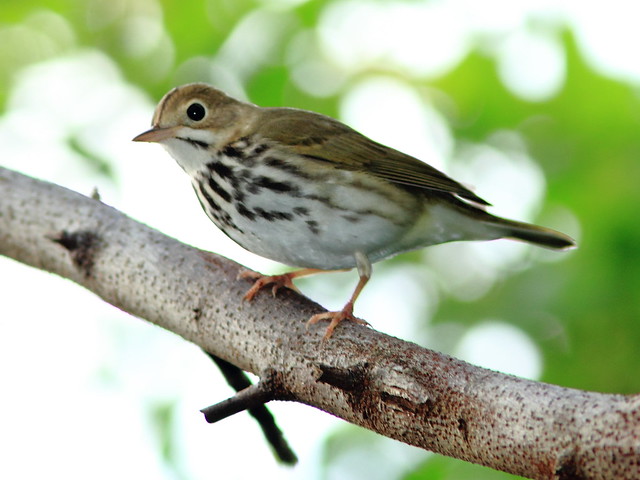
However, after moving into our part-time home in northeastern Illinois, in 2007, I was surprised that Ovenbirds did not breed there and their songs were absent. On April 30 of this year, I saw my first Illinois Ovenbird, at Nelson Lake/Dick Young Forest Preserve in Batavia. It was the fourth sighting of an Ovenbird ever reported on eBird from this birding hotspot in 10 years, and the very first seen there during spring migration.
The decline in Ovenbird numbers has been attributed to the fragmentation of deciduous woodlands by development. There is less food for them on the edges and they prefer larger tracts of forest. However, recent research may have uncovered another important reason for their scarcity in some areas.
During the last Ice Age, native earthworms were killed out in areas covered by the glaciers, and over the 11,000 years since the ice retreated they have extended their range northward very slowly, only about 1/2 mile in the last 100 years. In fact, no native earthworms have yet been found in the Great Lakes area of the US.
The northern hardwood forests evolved in the absence of earthworms. Leaf litter accumulated under the trees, holding the moisture and providing an ideal substrate for herbaceous plants and native tree seedlings, among which the Ovenbirds hid their oven-shaped nests and found abundant food.
This American Robin has caught a juicy alien tidbit in a park near our Illinois home:
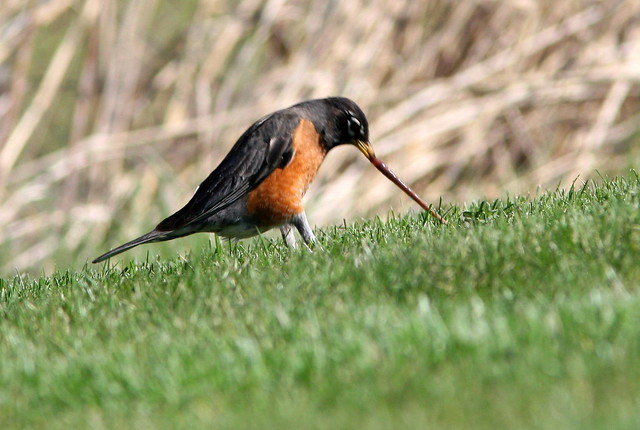
Native earthworms face competition from invasive European earthworms, introduced by early settlers and spread in mulch, root balls and by commercial trade in "nightcrawlers" and "angleworms," used in compost piles and released by anglers. They now occupy the northern hardwood forests and have had a devastating effect on the habitat. Ironically, this is due to the very property that makes earthworms so valuable to gardeners as they break down waste vegetation, aerate and fertilize the soil.
The enriched soil of the forest floor invites invasion by exotic plants that do not provide suitable nesting or foraging sites for Ovenbirds.
"Researchers at the University of Minnesota, and elsewhere, have documented dramatic changes in native hardwood forest ecosystems when exotic earthworms invade. These changes including losses of native understory plant species and tree seedlings, changes in soil structure and declines in nutrient availability. There is also fascinating evidence emerging that the changes caused by exotic earthworms may lead to a cascade of other changes in the forest that affect small mammal, bird and amphibian populations, increase the impacts of herbivores like white-tailed deer, and facilitate invasions of other exotic species such as European slugs and exotic plants like buckthorn and garlic mustard. These results suggest that exotic earthworms may pose a grave threaten [sic] the biodiversity and long term stability of hardwood forest ecosystems in the region. Much more research is needed." Ref: Earthworms to blame for decline of Ovenbirds in northern Midwest forests, study reveals
Although grouped as members of the New World wood-warbler family, Ovenbirds lack the flamboyant coloration of many of that tribe, and mostly walk on the ground to find their food rather rather than hop through tree branches.
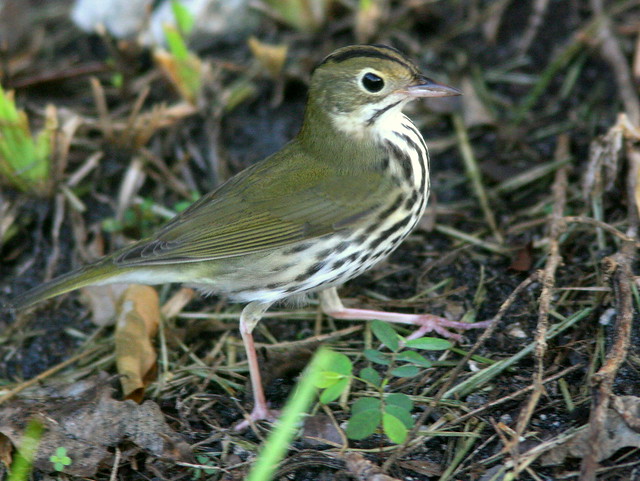
Their legs are pale pink, and the Ovenbird often cocks up its short tail.
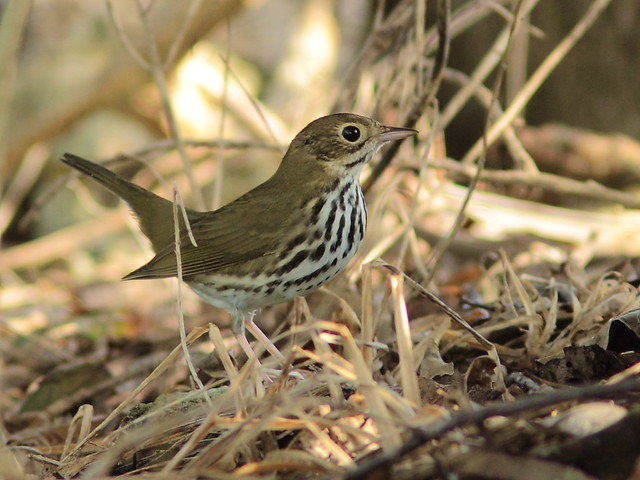
With an olive brown back and white breast streaked and speckled with black, they somewhat resemble tiny thrushes, but they have distinctive eye rings and an orange crown bordered by dark lines.
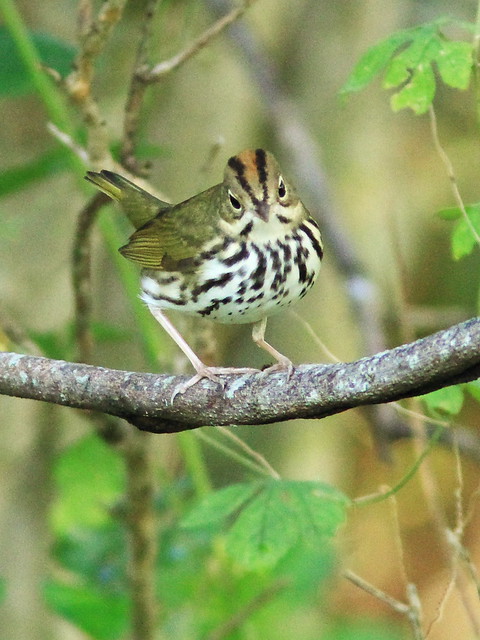
Sometimes there is very little orange on the crown, but the black streaks are very evident.
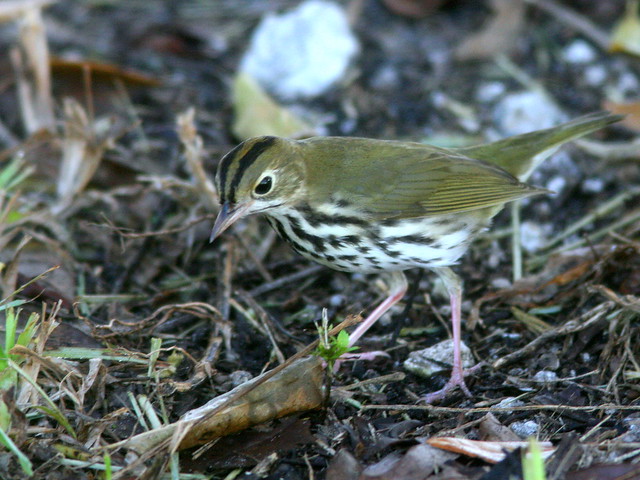
This is not mentioned in any of my field guides, but I notice that Ovenbirds' wings are very noisy. I can often hear one flying before I find it.

This one high-stepped along a branch, as if walking a high wire in the circus.

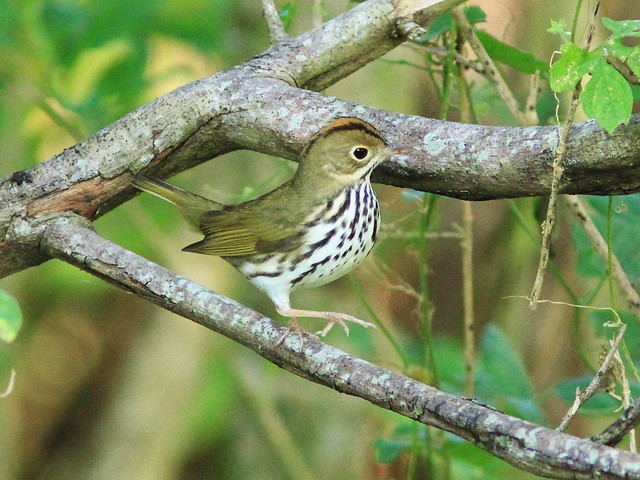
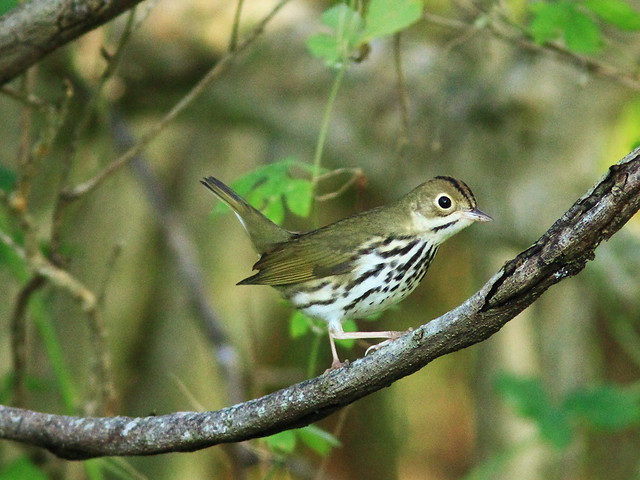


I wasn't aware that the Ovenbird used to be more widespread. That's interesting that development and non-native worms have contributed to their decline. In my native northern Minnesota the forest echoes with "Teacher, teacher, teacher!" everywhere you go. I love that sound.
ReplyDeleteVery interesting blog post. Thanks very much for sharing this information.
ReplyDeletesuch wonderfully clear photos of the ovenbird; one I've never seen before -- I also loved the robin shot
ReplyDeleteBeautiful ovenbird photos. Here in SW NH we still have lots of ovenbirds, fortunately.
ReplyDeleteMan's interventions don't always work as planned! I wonder how many more instances of this sort of thing that there are.
ReplyDeleteKen, I loved this post and I had no idea that our dear little Ovenbirds were in danger from loss of food and habitat! Thanks for bringing this to our attention and for your wonderful photos!
ReplyDeleteI enjoyed reading this info. They are such cute little birds. I didn't know any of this about the earthworms so thanks for passing the info on.
ReplyDelete